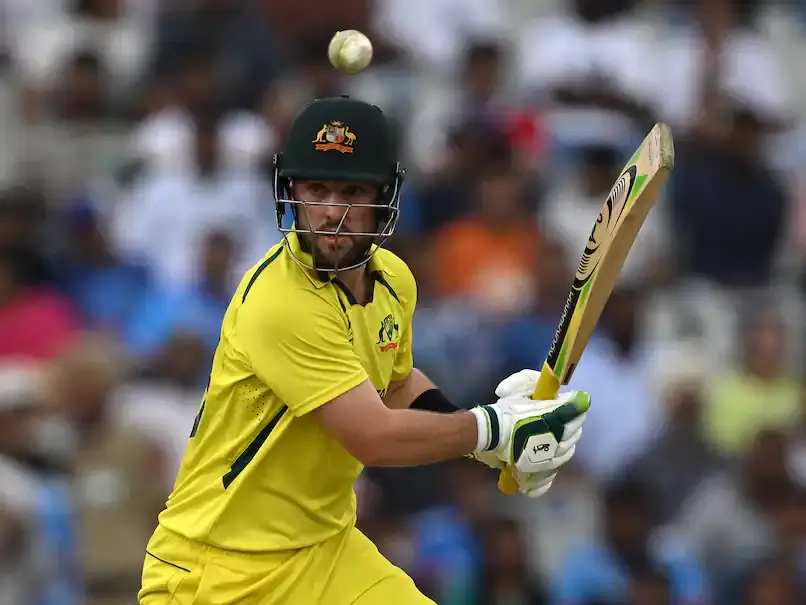Josh Inglis has emerged as a beacon of hope in Australian cricket’s evolving landscape. Known for his sharp glovework and dynamic batting, he’s sparking debates about the future of wicket-keeping Down Under. At 30, Inglis blends experience with youthful energy, making him a standout talent.
Born in Leeds and refined in Perth, his journey is as compelling as his performances. He’s not just a player; he’s a potential game-changer who’s already led Australia in limited-overs cricket. As stalwarts like Tim Paine fade, the spotlight turns to Inglis’s next move.
This article explores his rise, dissects his abilities, and weighs his place in cricket’s future. From domestic heroics to international stages, Inglis’s story is one of grit and promise. Could he be the key to Australia’s wicket-keeping legacy like Glenn McGrath? Let’s find out.
A Transcontinental Talent: Inglis’s Unique Beginnings
Josh Inglis’s cricketing roots stretch across continents, starting in Leeds, England, in 1995. His family’s move to Perth at 14 introduced him to Australia’s competitive cricket scene. It was here, under the West Australian sun, that his talent began to shine.
Inglis adapted quickly, excelling in junior cricket and earning a reputation for versatility. His early days weren’t just about keeping; he showed a knack for scoring runs, too. This dual skill set caught the attention of local coaches and selectors fast.
As per Wikipedia, his transition from England to Australia shaped his aggressive yet disciplined style. Unlike many peers, Inglis didn’t follow a traditional path, which adds intrigue to his narrative. His journey reflects resilience—a trait that’s now defining his international career.
Breaking Through in Domestic Cricket
Inglis’s domestic career took off with Western Australia and the Perth Scorchers. His first-class debut in 2016 showcased his potential, with tidy keeping and handy runs. By 2020, he’d notched a maiden century, proving his batting wasn’t a fluke.
In the Big Bash League, he became a fan favorite, smashing 405 runs in the 2020-21 season. His consistency earned him a spot in Australia’s T20 World Cup squad in 2021. Though he didn’t play, it marked his arrival on the big stage like a semi-final against India in CT 2025.
Mastering the Gloves: Inglis’s Keeping Edge
Wicket-keeping demands agility, focus, and split-second decisions—qualities Inglis has in spades. His work behind the stumps is crisp, with diving catches and quick stumpings setting him apart. He’s equally adept against pace and spin, a rare combo.
In the 2023 ODI World Cup, he proved his mettle in India’s tricky conditions. Standing up to Nathan Lyon or Adam Zampa, his glove work stayed flawless. As ESPN reports, teammates call him “lightning quick,” a nod to his reflexes.
What makes Inglis special is his calm demeanor under pressure. He reads batters well, anticipating edges or missed shots with ease. This skill elevates him beyond a backup to a potential mainstay.
Adapting to the Big Time
Inglis’s international keeping debut came against Sri Lanka in 2022, a quiet start. But his 2023 World Cup stint was a game-changer, holding firm through the final. He didn’t just survive; he thrived, earning selectors’ trust.
His ability to handle diverse bowling attacks stands out. From Jasprit Bumrah’s pace to Ravindra Jadeja’s spin, he’s kept his cool. This adaptability hints at a keeper built for global challenges.
Beyond the Stumps: Inglis’s Batting Firepower
Inglis isn’t just a keeper—he’s a batter who can turn games single-handedly. His T20I strike rate hovers above 140, showcasing his attacking flair. A 43-ball century against Scotland in 2024 stunned cricket fans worldwide, but Australia also fell against Zimbabwe.
He’s versatile too, slotting into any batting position with ease. In ODIs, his 120 off 86 balls against England in 2025 was pure class. As the ICC notes, his average of 28 reflects growing consistency.
His style blends power with finesse, finding gaps or clearing boundaries as needed. This makes him a dual-threat player, a rarity among modern keepers. Australia’s batting depth owes much to his aggressive approach.
Key Stats That Define Inglis
Here’s a snapshot of Inglis’s prowess, sourced from the ICC’s official records:
| Format | Matches | Runs | Average | Strike Rate | Catches/Stumpings |
|---|---|---|---|---|---|
| T20I | 21 | 546 | 28.7 | 143.3 | 12/1 |
| ODI | 15 | 420 | 28.0 | 92.5 | 18/2 |
| First-Class | 45 | 2,315 | 34.5 | 58.2 | 135/4 |
These numbers highlight his balance of attack and reliability.
Leading from Behind: Inglis’s Captaincy Stint
In 2024, Inglis stepped up as Australia’s captain in ODIs and T20Is—a bold move. Wicketkeepers rarely lead, given the role’s demands, yet he excelled. His first series win against Pakistan showcased his tactical nous.
BBC Sport quoted selector George Bailey praising his “natural leadership instincts.” Inglis’s on-field decisions, like rotating bowlers smartly, kept opponents guessing. He’s aggressive but composed, a rare mix for a young captain.
This role signals Australia’s faith in his cricket brain. Leading from behind the stumps requires multitasking—Inglis does it effortlessly. His captaincy could shape team strategies for years to come.
A Keeper-Captain Legacy
Historically, wicketkeeper-captains like Adam Gilchrist set high bars in Australia. Inglis follows this path, albeit in shorter formats so far. His leadership debut at 29 mirrors Gilchrist’s early responsibility.
Unlike Gilchrist, Inglis leans on proactive field settings over sledging. His calm presence steadies the team in tense chases or defenses. This modern twist on a classic role hints at evolution.
Standing Tall: Inglis Among Australia’s Keepers
Australia’s wicket-keeping pool is deep, with Alex Carey and Matthew Wade as benchmarks. Carey’s Test pedigree is strong, while Wade’s T20 grit is unmatched. Yet, Inglis brings something different to the table.
His batting edge—higher strike rates and adaptability—outshines Carey’s more conservative style. Compared to Wade, Inglis offers youth and finesse, per Cricket Australia’s insights. Josh Inglis is not replacing them yet, but he’s closing the gap fast.
The real test is longevity. If Inglis sustains his form, he could outlast both in limited-overs cricket. His all-round package makes him a selectors’ dream, also due to his dominating performances in first-class cricket.
What Sets Him Apart
Inglis’s agility trumps Carey’s, especially against spin, a key in subcontinental tours. Wade’s experience is vast, but Inglis’s batting firepower feels fresher. His leadership adds another layer that competitors lack.
His World Cup final stint showed he’s ready for big moments. Carey and Wade have had theirs; Inglis’s time is now. That versatility could tip the scales in his favor.
The Road Ahead: Inglis’s Wicket-Keeping Legacy
Josh Inglis stands at a crossroads, with the potential to redefine Australia’s wicket-keeping future. His prime years align with upcoming tournaments like the 2027 ODI World Cup. If he stays injury-free, his impact could be massive.
He’s already proven he can handle pressure, from World Cup finals to captaincy duties. His ability to evolve—adding shots or refining glovework—keeps him ahead. As per Wisden, he’s “the complete keeper” Australia needs post-Paine, like a godfather of aggressive cricket.
The transition phase in Australian cricket favors the Josh Inglis rise. With veterans retiring, his blend of youth and skill fits perfectly. He’s not just the future—he’s the present, building a legacy now, like the Indian Team in CT 2025.
Conclusion
Josh Inglis is rewriting the script for Australian wicket-keeping with every match. His journey from Leeds to leading Australia reflects a rare blend of talent and tenacity. Behind the stumps or with the bat, he’s proving his worth consistently.
His stats tell a story of growth, while his captaincy hints at untapped potential. As Australia seeks its next cricketing icon, Inglis stands ready to step up. His legacy isn’t set yet, but the signs are clear—he’s here to stay.
Cricket fans have plenty to cheer for as Inglis carves his path. The future of wicket-keeping Down Under looks brighter than ever. Watch this space; his best is yet to come.















